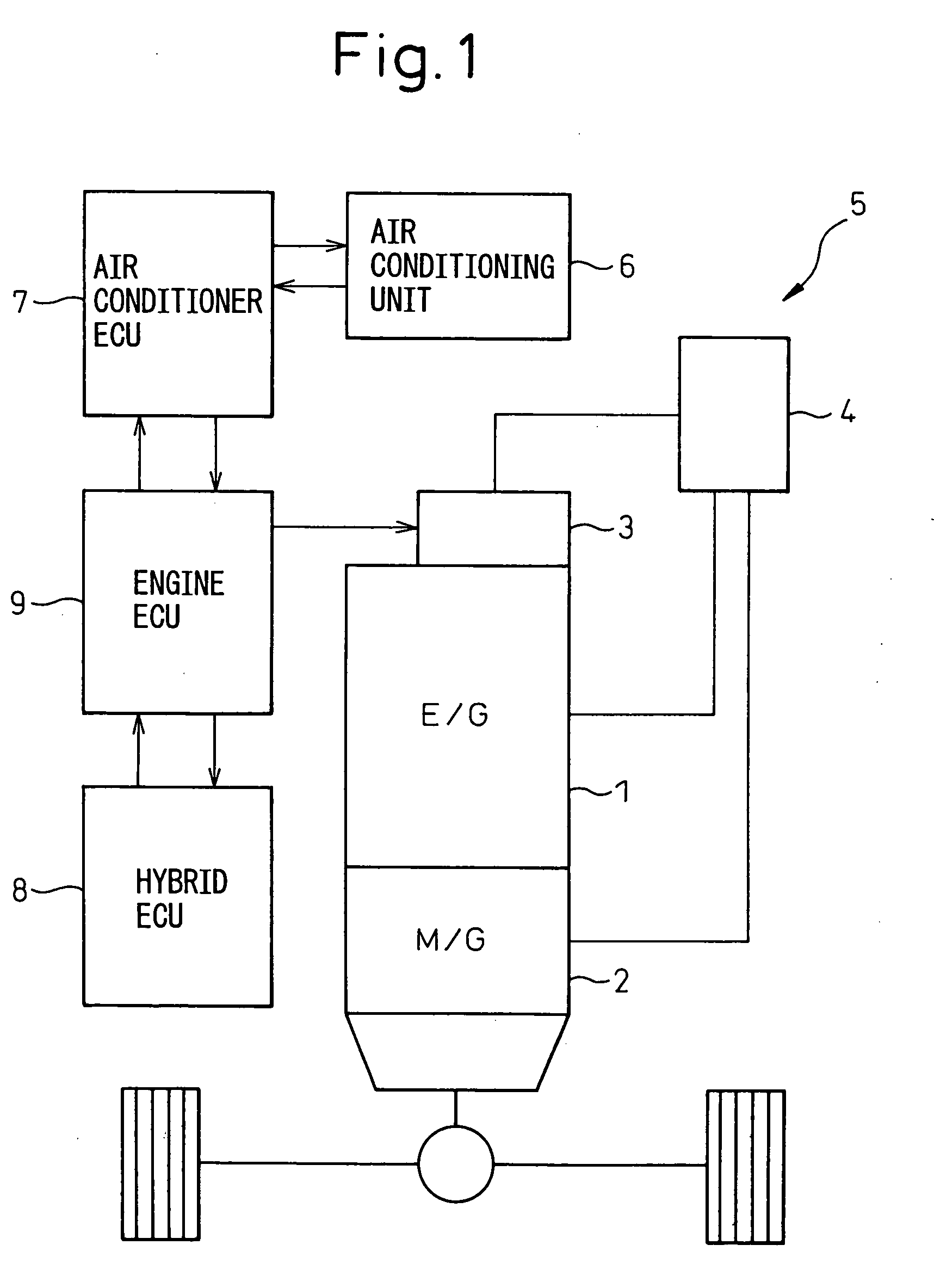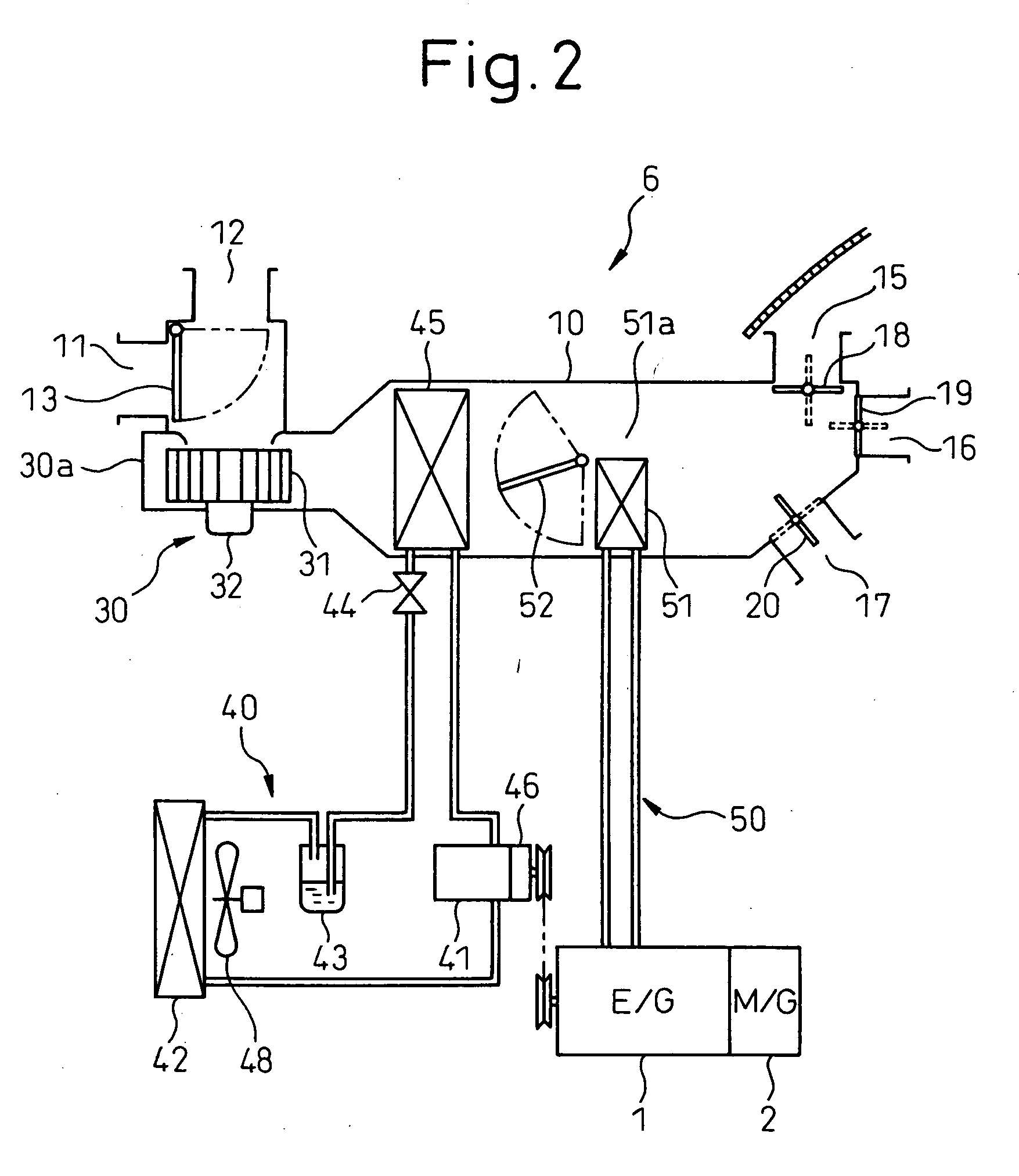Automotive air conditioning system
a technology for air conditioning systems and automobiles, applied in the direction of temperatue control, process and machine control, instruments, etc., can solve the problems of reducing the comfort level provided during bilevel mode operation, unable to establish the temperature distribution of foot-warm outlet, and prolonging the operating time of the engine, so as to improve fuel economy and comfort. , the effect of improving the comfor
- Summary
- Abstract
- Description
- Claims
- Application Information
AI Technical Summary
Benefits of technology
Problems solved by technology
Method used
Image
Examples
second embodiment
While, in the first embodiment, the heater core 51 for heating air using the engine coolant supplied from the vehicle running engine 1 as the heat source is used as the heater for heating air sent out into the passenger compartment, a heater for heating air that is sent out into the passenger compartment is made up of a radiator on a high-pressure side of the refrigeration cycle in a second embodiment.
The second embodiment will be described by reference to FIG. 14. FIG. 14 shows an air conditioning system that is applied to an electric vehicle which is provided with a vehicle running motor as a driving source for running the vehicle and with no vehicle running engine. Here, the electric vehicle may be a type such as a fuel cell vehicle in which a vehicle running motor and an on-board battery are charged with fuel cells and an electric vehicle in which an on-board battery is charged with a battery charger outside the vehicle.
In a refrigeration cycle 40, a compressor 41 is an ele...
third embodiment
While, in the first embodiment, the engine coolant that is heated by the vehicle running engine 1 is used as hot water that circulates to the heater core 51 for heating air that is sent out into the passenger compartment, in a third embodiment, as shown in FIG. 15, hot water that is circulated to a heater core 51 is designed to be heated by an electric heater 86.
As with the second embodiment, the third embodiment is also directed to an electric vehicle which is provided with no vehicle running engine. Consequently, a compressor 41 in a refrigeration cycle 40 is an electric compressor that is driven by an electric motor energized by an on-board battery. The remaining features of the third embodiment are identical to those of the first embodiment.
In the third embodiment, by adjusting the heating capacity of the electric heater 86, the temperature of hot water that is circulated to a heater core 51 can be adjusted. Consequently, also in the third embodiment, similar function and a...
fourth embodiment
While, in the third embodiment, hot water that is circulated to the heater core 51 is designed to be heated by the electric heater 86, in a fourth embodiment, as shown in FIG. 16, instead of the hot water heater core 51, an electric heater 87 is disposed directly along an air passageway within an air conditioning case 10. Here, the electric heater 87 is constructed as a heat exchanger having a laminated structure made up of a number of plate-like electric heater members and corrugated fins.
In the fourth embodiment, by adjusting the heating capacity of the electric heater 87, the capacity of heating air within the air conditioning case 10 can be adjusted. Consequently, also in the fourth embodiment, a function and an advantage similar to those provided in the first and third embodiments can be exhibited by controlling the heating capacity of the electric heater 87 such that the hot water temperature for a target air-outlet temperature TAO during a bilevel mode operation becomes hi...
PUM
 Login to View More
Login to View More Abstract
Description
Claims
Application Information
 Login to View More
Login to View More - R&D
- Intellectual Property
- Life Sciences
- Materials
- Tech Scout
- Unparalleled Data Quality
- Higher Quality Content
- 60% Fewer Hallucinations
Browse by: Latest US Patents, China's latest patents, Technical Efficacy Thesaurus, Application Domain, Technology Topic, Popular Technical Reports.
© 2025 PatSnap. All rights reserved.Legal|Privacy policy|Modern Slavery Act Transparency Statement|Sitemap|About US| Contact US: help@patsnap.com



